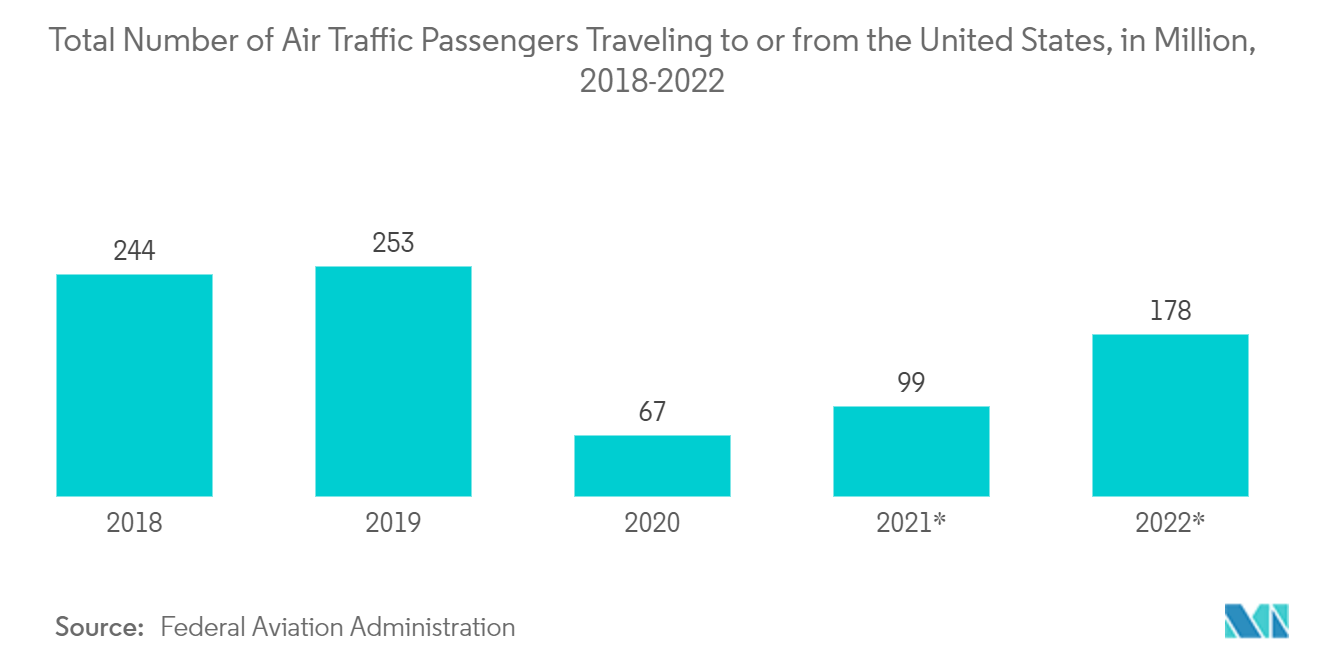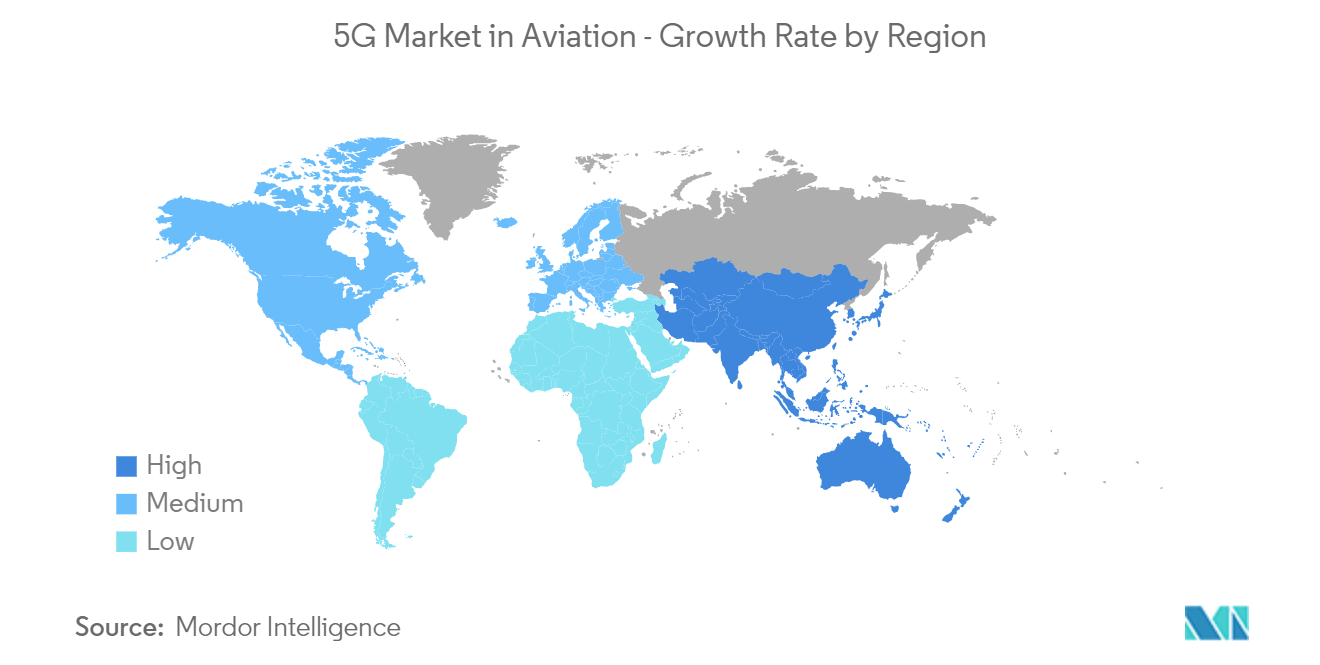Market Trends of 5G Industry in Aviation
Ground-to-Ground Communication type is Expected to Register a Significant Growth
- As 5G Use Cases are becoming increasingly well-articulated by the industry and the ultra-high reliability and low latency of 5G come into the picture, their presence in the aerospace sector will surely increase in the years to come. Moreover, airports worldwide are rapidly implementing 5G technology for effective ground-to-ground communication at airport premises.
- For instance, in September 2022, Delhi Airport launched its 5G infrastructure. The airport becomes the only 5G-enabled airport in India where passengers can use the advanced mobile service inside the terminal. The flyers arriving or departing from the runway can now experience the power of the 5th generation mobile network technology (5G).
- The growth of 5G broadband is expected to complement the existing 4G technology, using similar frequency bands but with higher data rates, greater reliability, and lower latency or lag. Further, carriers and device manufacturers can use frequency bands that have not been used in cellular communications but are commonly used in aerospace and radar applications.
- Also, the rise in passenger traffic is leading to an increase in demand for good internet connectivity in airports and connected aircraft. Hence airports across this region are boosting the growth of the ground-to-ground connectivity segment. For instance, according to the Federal Aviation Administration (FAA) forecast, the total number of air traffic passengers traveling to or from the United States is expected to reach 178 million in 2022.
- Apart from technological innovation in the equipment used in the industry, the ground staff and airports are expected to see a significant change over the coming years due to 5G. With the growing proliferation of technology and smartphones, consumers are increasingly expecting digital engagement and personalized experiences in airports.

North America is Expected to Hold Significant Market Share
- The North American region is expected to hold a substantial market share due to the early adoption of advanced technologies, increasing air traffic coupled with rising investments in connected aircraft and in-flight broadband, and the modernization of the aviation industry. Moreover, the presence of many prominent players in the North American region further augments the market's growth.
- According to FAA, 5G signals use frequencies closer to the ones used by radio altimeters, which determine the aircraft's height from the ground and are critically important when flying in bad weather. As a result, the FAA found that these 5G signals could potentially cause the altimeters to issue incorrect flight data.
- Further, the agency intends to order passenger and cargo aircraft to install 5G-safe equipment on all airplanes by 2024. As a result, in June 2022, Verizon Communications and AT&T voluntarily agreed to delay some C-Band 5G usage until July 2023 as air carriers work to retrofit airplanes to ensure they will not face interference. This may impact the rollout of the 5G services in the region's aviation sector in the short term.
- However, the upsurge in airline passenger traffic, modernization in the region's aviation industry, and changes in passenger preferences are expected to drive the demand for high band-with, low latency, and densely connected networks for operational efficiency, thus positively impacting the market growth in the region. In addition, the high adoption of IoT in the United States is expected to spur the demand for 5G in Region's aviation sector.


